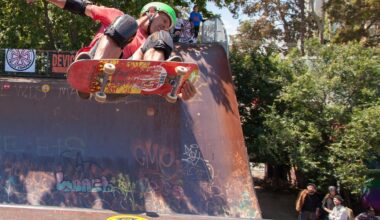Customizing Functional Fitness Programs for Seniors
Seniors often face unique challenges regarding health and fitness, making customized functional fitness programs essential. The goal of these programs is to improve strength, flexibility, and balance, enabling older adults to perform daily activities with confidence. Fundamental assessments should be conducted to tailor programs to each individual’s needs. These assessments may evaluate mobility, strength, endurance, and flexibility. Once completed, specific exercises can be selected from a range of options suitable for seniors, keeping in mind any medical conditions or physical limitations. The most common exercises used in senior functional training include low-impact movements that focus on core and lower body strength. It is imperative to incorporate warm-ups and cool-downs into the regime to reduce the risk of injury. Moreover, incorporating flexibility training can enhance overall joint health, which supports the aging process. Personalized training sessions can also foster social interaction among participants, making exercise more enjoyable. With appropriate modifications, seniors can significantly improve their fitness levels and overall well-being. When developing a plan, consider each individual’s preferences and make adjustments as necessary to maintain engagement and motivation throughout the process.
Functional fitness programs are designed to replicate everyday movements, thereby enhancing the quality of life for seniors. Key components include exercises that emphasize balance, coordination, and proprioception. One vital aspect of these programs is functional mobility training, which helps seniors perform daily tasks, such as getting in and out of a chair or walking up stairs. This type of training is crucial, as it empowers seniors to maintain independence and reduce fall risks. Incorporating effective strength training exercises improves muscle mass, which tends to decline naturally with age. It is recommended to include resistance bands and light weights into routines for added challenge without overexertion. Another important element is cardiovascular conditioning, which can improve stamina and heart health. Activities such as walking, cycling, or using an elliptical can effectively elevate the heart rate while being safe for lower-impact needs. Utilizing education about body mechanics is advisable so that seniors learn to move efficiently without risking injury. Establishing a progressive training approach allows for gradual increases in intensity or complexity, ensuring that seniors remain challenged, yet comfortable. The combination of strength, flexibility, and endurance exercises is critical for implementing a comprehensive functional fitness program that meets the specific needs of seniors.
Factors Influencing Program Customization
Several factors influence how functional fitness programs are customized for seniors, requiring a comprehensive understanding of each individual’s abilities. Initial considerations include the senior’s physical condition, including any existing health issues or disabilities. For instance, those with joint problems may need low-impact exercises to prevent aggravation. Age-related changes such as decreased muscle mass or stamina should also be factored in as these can significantly affect the choice of exercises. Additionally, personal preferences play a crucial role; seniors are more likely to be engaged if they can choose activities they find enjoyable. Social aspects, including the opportunity to participate in group classes or partner workouts, can enhance motivation. It is also important to consider individual goals; some may wish to improve balance to prevent falls, while others may want to build strength for daily tasks. Training sessions must be adaptable to exceed the baseline expectations as seniors progress in their fitness journey. Moreover, it’s pivotal to encourage regular assessment of abilities to modify the program as the seniors gain strength and confidence over time, ensuring their evolving needs are met effectively throughout their fitness journey.
Another essential consideration when customizing functional fitness programs for seniors is the need for safety and injury prevention. Ensuring that exercises are performed correctly is crucial; this may involve educating seniors on proper form and posture throughout each movement. Oversight from qualified trainers or instructors with experience in geriatric fitness provides crucial guidance. Implementing a gradual warm-up routine can help prepare the muscles and joints for more strenuous activities, minimizing the risk of strain. Furthermore, sessions should be paced according to the seniors’ comfort levels, allowing ample recovery between exercises. Offering variations of each exercise encourages individuals to progress at their own speed, thereby promoting confidence and reducing the pressure to perform. Establishing a focus on mindful movement also aids in enhancing awareness of one’s body and limits. Another key preventative strategy is monitoring improvements and adjusting the program accordingly; this maintains engagement and motivation while also addressing any emerging challenges. Regular communication helps ensure that seniors feel comfortable discussing any discomfort or concerns regarding their routines. Implementing these safety measures ultimately leads to more effective and enjoyable fitness experiences for seniors, facilitating a sustainable path toward better health and wellbeing.
The Role of Nutrition in Fitness
Nutrition is an integral part of any fitness program, especially for seniors looking to enhance their functional fitness. Proper nutrition supports energy levels, muscle recovery, and overall health, making it a critical complement to exercise. A balanced diet rich in vitamins, minerals, protein, and healthy fats is essential. Seniors often require more protein to counteract muscle loss and support recovery after workouts. Foods like lean meats, fish, dairy products, and legumes are excellent sources of protein. Additionally, including plenty of fruits and vegetables ensures that seniors receive vital nutrients that support immune function and bone health. Adequate hydration is also essential, as older adults may have reduced thirst perception. Encouraging them to drink water before, during, and after workouts helps prevent dehydration. It’s also important to discuss portion control and mindful eating practices, as maintaining a healthy weight can significantly affect fitness outcomes. Educational resources or collaborating with a nutritionist may enhance their understanding of healthy eating practices. By combining the benefits of nutrition with customized fitness programs, seniors can enhance their overall health and well-being, leading to improved functional capabilities and an enriching quality of life.
Effectively customizing functional fitness programs for seniors necessitates the incorporation of technology where possible. Various fitness apps and devices can facilitate tracking of workouts and progress, motivating seniors to stay engaged. Many seniors benefit from utilizing activity trackers to monitor their physical exertion levels throughout the day, providing valuable feedback and encouraging regular movement. Virtual classes and online resources can add convenience, allowing seniors to participate in sessions from home. This is particularly beneficial for those who may have mobility issues or live in remote areas. Establishing a routine with technology-supported workouts that are tailored to individual needs makes physical activity less intimidating and more attainable. Online communities or platforms can foster social interactions, allowing seniors to connect with peers who share similar fitness goals. Furthermore, video tutorials can serve as valuable tools for guiding through exercises at home, ensuring that proper form is maintained. Technological advancements within the fitness space should be embraced as they can enhance the understanding of personal health and wellness. Combining individual programs with supportive digital tools empowers seniors to take more control over their fitness journeys while breaking down barriers to physical activity. This integration leads to greater overall satisfaction.
Engagement Strategies for Success
Keeping seniors engaged in their functional fitness programs is vital for their long-term success. One effective strategy is to incorporate variety in exercises and activities to prevent monotony. By introducing new routines or equipment consistently, seniors will find workouts more enjoyable. Additionally, creating goals, both short-term and long-term, provides a beneficial framework to help seniors track progress and celebrate achievements, which bolsters motivation. Partnering seniors with workout buddies or small groups can foster a sense of community and encourage accountability among participants. This social aspect can make attending classes more appealing and less intimidating. Regularly updating participants on their improvements through positive reinforcement reassures them that their efforts are paying off. Offering incentives, such as recognition or rewards for consistent attendance or milestone achievements, can further motivate seniors to remain committed. Moreover, soliciting feedback can create a collaborative environment; seniors will appreciate having a voice in workout-related decisions. Engaging them in tailored programs leads to increased ownership of their fitness journey. By implementing these strategies, trainers can create an inviting atmosphere for elder adults, which ultimately supports their fitness goals and enhances their overall well-being.
In conclusion, customizing functional fitness programs for seniors is essential in promoting health and vitality during the aging process. By taking a holistic approach, incorporating personalized assessments, adaptability in exercises, nutrition education, and the use of technology, fitness trainers can create effective and enjoyable programs. The emphasis should always be on safety and gradual progress, ensuring seniors feel comfortable with their routines. Encouraging engagement through social interactions and thoughtfully designing workouts can lead to a continuum of improvement in strength, balance, and flexibility. Moreover, fostering an environment conducive to exploration and growth empowers seniors to actively participate in their health journey. With the right strategies and mindset, exercise can be a joyful and impactful experience in their later years. The culmination of all these efforts can lead to enhanced independence, improved quality of life, and endless opportunities for personal fulfillment. Taking these steps not only aids fitness growth but also raises awareness about the importance of staying active as one ages. As trainers or caregivers, it is imperative to be proactive in developing unique functional fitness programs tailored specifically for older adults, ultimately guiding them toward a healthier lifestyle and greater longevity.


